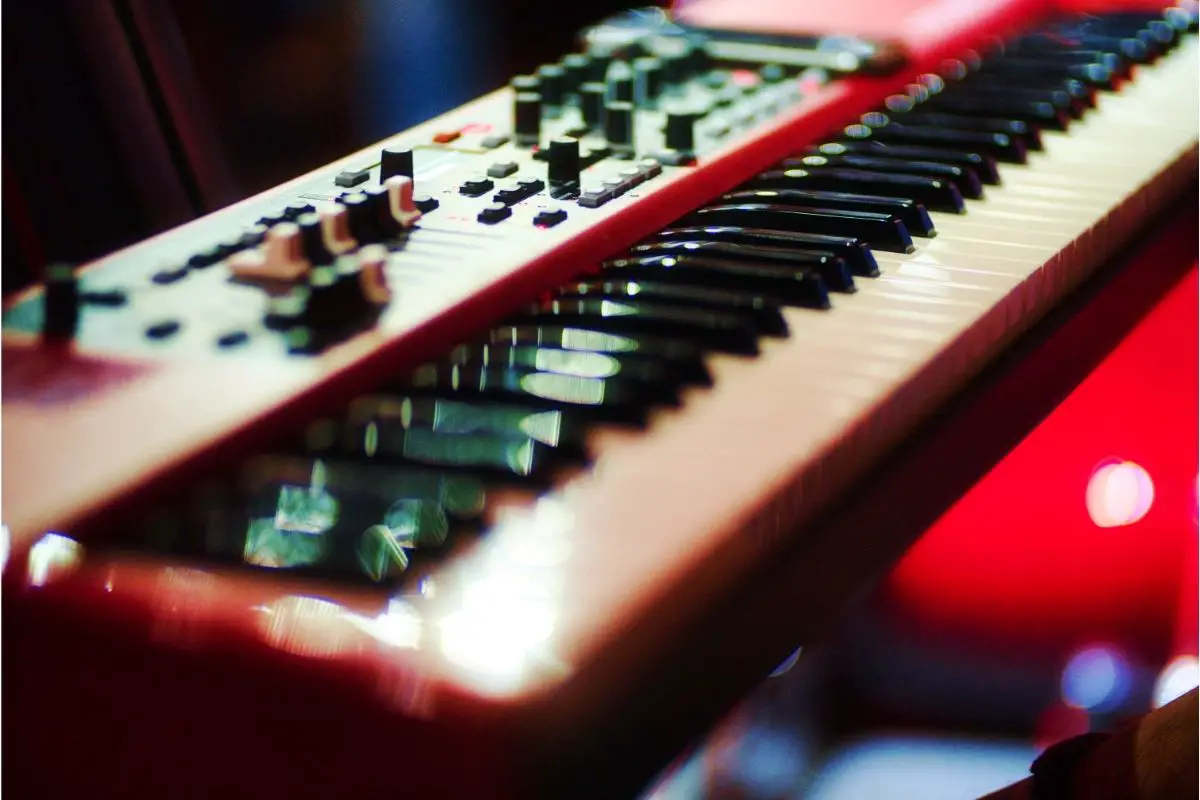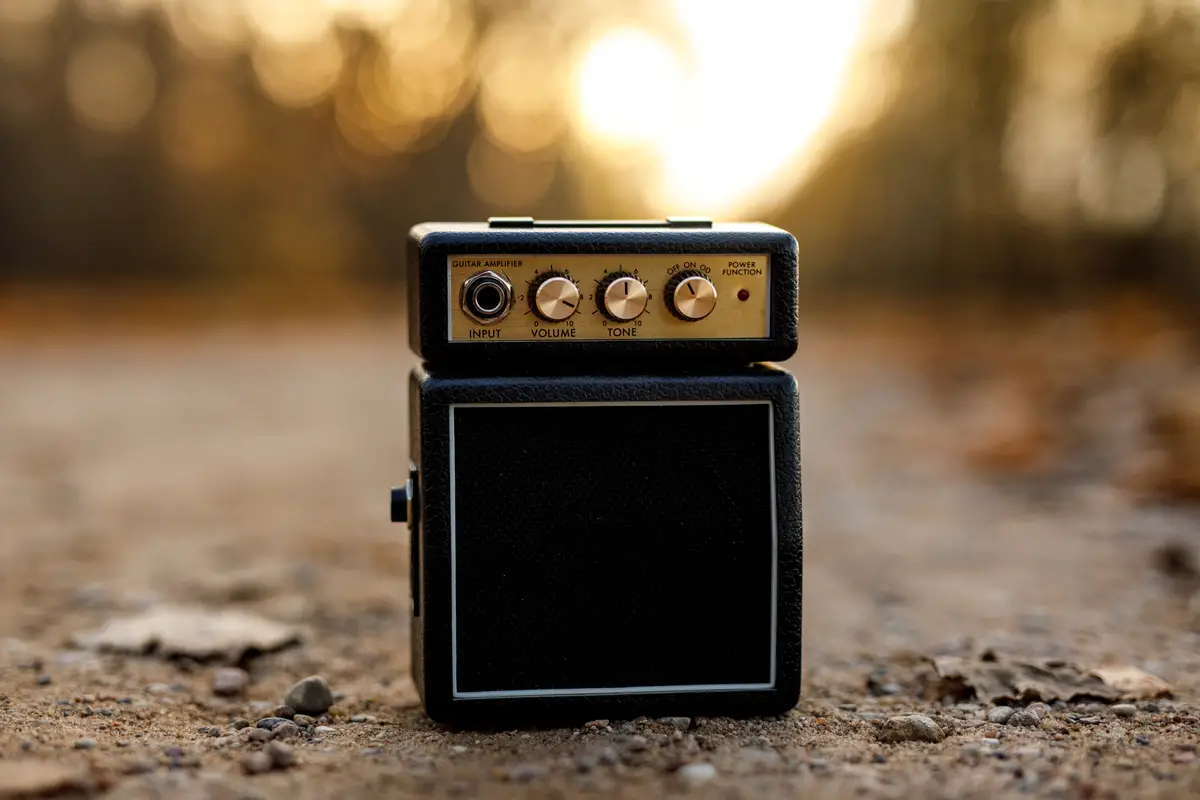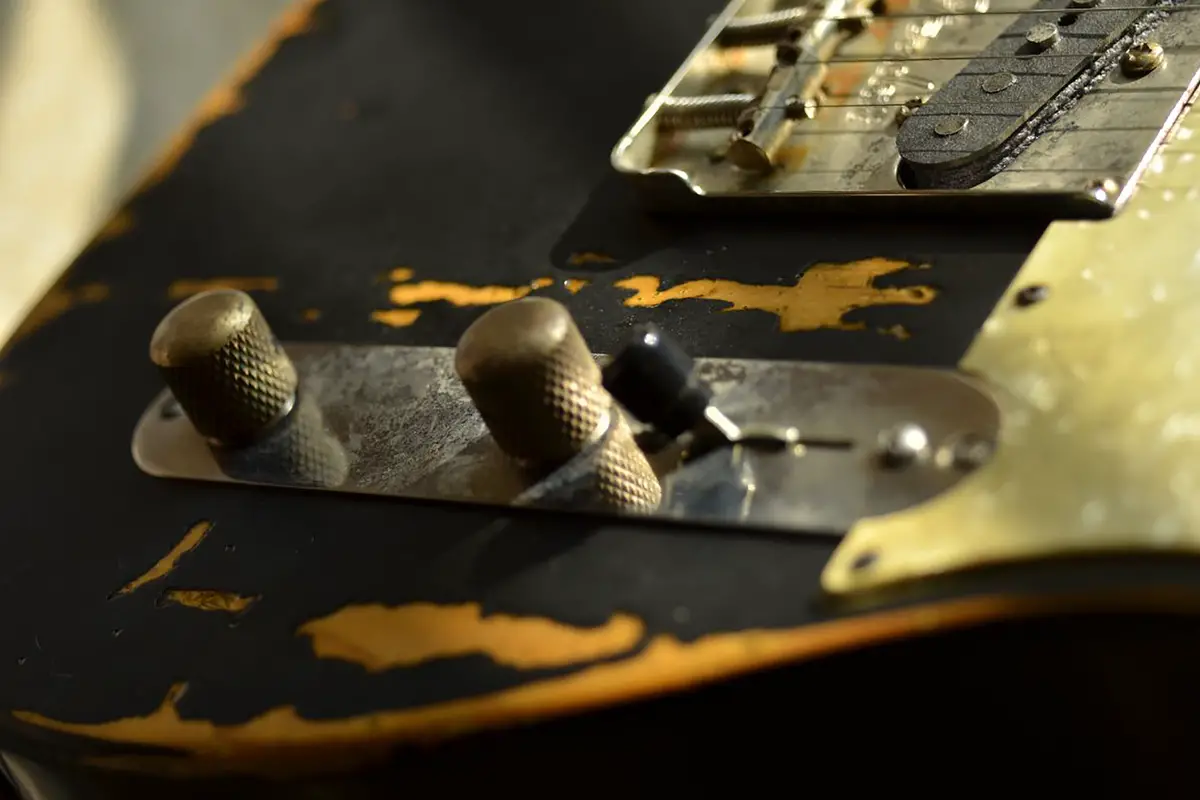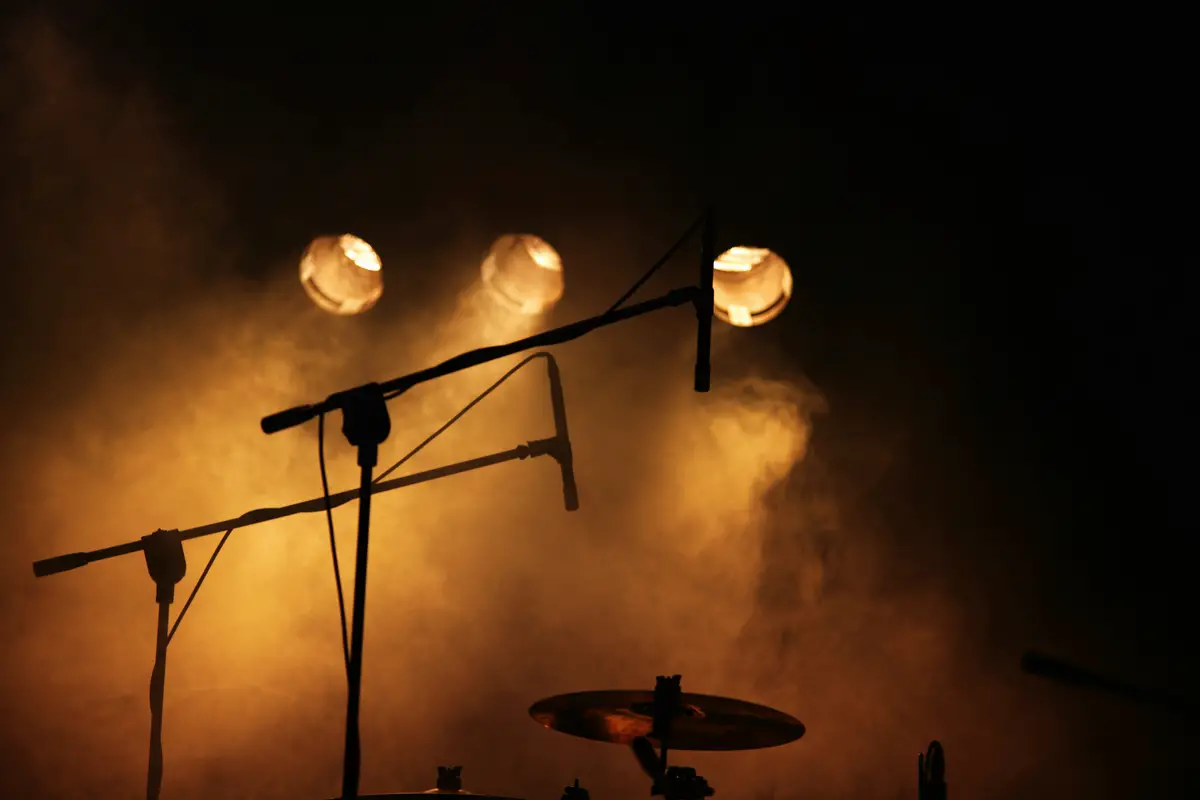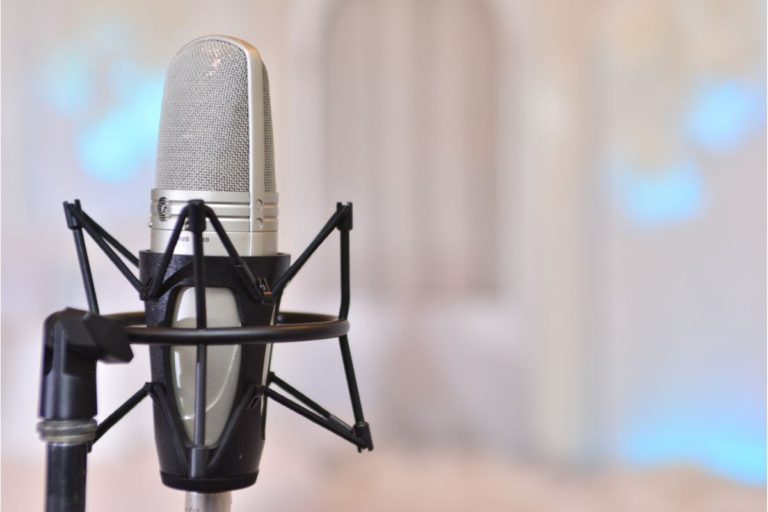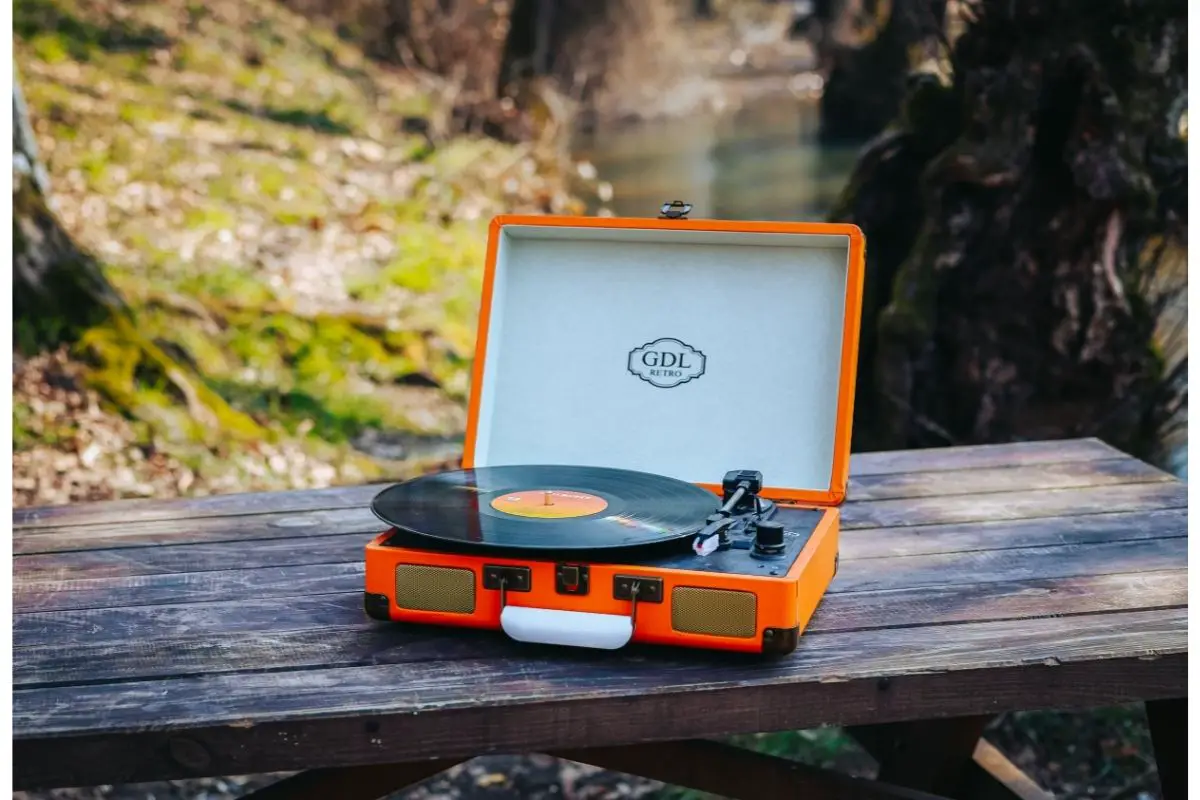The Best Synthesizers for Beginners
Synthesizers are full of knobs, buttons, and dials, so buying one can feel overwhelming, especially if you’re new. If you want a beginner synth, you’ll likely have many questions.
This article has a lot of answers.
So, what’s the best beginner synth for you? That depends on a few personal preferences and whether (or not) you want to pursue a long-term career in music production.
But regardless, you don’t want to feel overwhelmed by an instrument while learning. It can all feel like too much of a synth learning curve when you get some overly complicated device.
So, if you want a good synth for beginners, you’ve come to the right place. But first, let’s start with the basics.
What is a Synthesizer?
To make a long story short, a synth is an electronic musical instrument. While many think it is connected to a keyboard, they do not need to be, making the midi keyboard optional.
Synths come in two forms: software and hardware synths. Software synths are the digital form, while hardware synths are physical devices. All of the synths on this list fall under the hardware category.
We’ll revisit some of the more technical aspects of how to buy a beginner’s synth in the later half of the article. But for now, let’s get into our picks on the best synths for beginners.
Beginner Synths: 7 of the Best
1. Korg Minilogue XD
- 4-voice Analog/Digital Synthesizer with 2 VCOs per Voice
- 16-step Polyphonic Sequencer
- Digital Multi-engine
- 4 Voice Modes
- MIDI/Sync I/O
Korg offers some of the most insane synths on the planet. But for many future synth gods, the Korg Minilogue XD is the perfect place to start.
The Korg Minilogue XD is an impressive polyphonic analog synthesizer that offers a wide range of sound possibilities for its size. With its intuitive interface, the Minilogue XD provides beginners with a hands-on approach to sound design. Its hybrid structure, combining analog circuitry and digital multi-engine, allows users to create both classic and experimental sounds.
Pros:
- Polyphonic with a versatile sound range.
- Intuitive and user-friendly interface.
- Built-in effects like modulation and reverb.
Cons:
- Some might find the mini keys too small.
- Limited sequencer steps.
2. Arturia MicroFreak
- EXPERIMENTAL HYBRID SYNTH: MicroFreak packs so much into such a compact instrument, you’ll wonder how we did it. From physical modeling to wavetable synthesis, it features 17 awesome paraphonic oscillator modes, including 7 bespoke Arturia engines, 7 modes from Mutable Instruments, and 3 modes designed with Noise Engineering. Its digital engines are combined with a lush-sounding resonant analog filter for true hybrid sound design.
- UNIQUE KEYBOARD: It isn’t really even a keyboard, it’s a super-flat PCB with no moving parts. The 25-key printed circuit board not only tracks the notes you play with lightning-speed, but can also detect pressure or aftertouch on each note individually.
- INNOVATIVE FEATURES: Record up to four automations, edit notes per step, or use the innovative Spice and Dice sequencer functions to find happy accidents. Add randomization to create evolving, original patterns, and virtually rewire and reconfigure its signal chain and controls with the 5×7 modulation matrix, with user-assignable destinations for totally unique sounds.
- MULTIPLE MODES: Easily switched and directly controlled with the 4 dedicated knobs in the Digital Oscillator section, MicroFreak has been constantly evolving. It now contains 17 oscillator types, covering a multitude of timbral flavors from sweet to savage: Vocoder, Noise, Superwave, Harmo, Karplus Str., Wavetable, BasicWaves, with many more.
- AMAZING CONNECTIVITY: It features CV outputs, letting you send pitch, gate, and pressure signals to any outboard or modular synth that’s CV/Gate compatible. You can also hook it up to your DAW via USB, or use the included MIDI break-out cables.
When Arturia released the MIcroFreak, it left hardened synth nuts the world over weak at the knees. This powerful and compact unit is incredibly impressive.
The Arturia MicroFreak stands out due to its unique combination of wavetable and digital oscillators. With a touch-sensitive keyboard and modulators, the MicroFreak is designed for those who wish to venture beyond traditional soundscapes. It’s a versatile piece that promotes creativity.
Pros:
- Variety of sound engines for diverse sonic experiments.
- The capacitive touch keyboard offers a unique playing experience.
- Great value for the price.
Cons:
- No traditional keybed, which might not be to everyone’s taste.
- The digital nature may be off-putting for analog purists.
3. Moog Matriarch
- Inspired by Moog Classics – Patchable 4-note paraphonic analog synthesizer with 49 velocity-sensing full-size keys with aftertouch, sequencer, arpeggiator, stereo Ladder Filters, stereo Analog Delay
- Paraphonic Playability – Sequence and perform in mono, duo, and 4-note paraphonic modes
- Stereo Analog Delay – Classic and ping-pong style repeats with lush infinite delay trails
- 90 Modular Patch Points – Create, mangle and explore the endless expanse of sound with 90 modular patch points
- More Than Standalone – Matriarch is also a processor of external sound sources and a powerful keyboard front-end for expanding DFAM, Mother-32, Grandmother or Eurorack modular systems
If you’re looking for the king (or queen, should I say) of analog synths, look no further than the Moog Matriarch, a 49-key, para-phonic beast that rewards sonic bravery and experimentation.
Moog Matriarch is a semi-modular, paraphonic synthesizer that offers a deep dive into the world of synthesis. Its ladder filter and analog oscillators deliver the iconic Moog sound. Though on the pricier side for beginners, its sound quality and patching possibilities are undeniable.
Pros:
- Powerful analog sound with Moog’s iconic filter.
- The semi-modular design allows for expansive sound design without patching.
- Built-in sequencer and arpeggiator.
Cons:
- Expensive for beginners.
- A larger footprint might not be ideal for compact setups.
4. Korg MicroKorg
- Sound Generation Method: Analog Modeling Synthesis System
- Synthesizer Program: Multi Timbral=2 (max, Split/Dual Mode)
- Voices: 4 voices. Power Supply- DC 9 V (AC adapter), or six AA alkaline batteries (sold separately)
- Arpeggiator: 6 types. Outputs: L/MONO, R, Headphones
- Compatibility : Windows – 98 Second Edition, Me, 2000 SP2, XP. Mac OS – OSX10.6.8 or later
The Korg MicroKorg is a classic in the realm of synthesizers, providing a compact solution without sacrificing quality. With 37 mini-keys and a built-in vocoder, it’s a versatile tool for new and experienced musicians. Its robust sound engine, derived from the larger MS2000, brings powerful synthesis into a portable package.
Pros:
- Robust sound engine in a compact size.
- Built-in vocoder with microphone.
- Wide range of presets suitable for various genres.
Cons:
- The small keys can be a challenge for some players.
- Editing sounds can be a bit complex for beginners.
5. Moog Mother-32
- Analog Signal Path – Raw and authentic sounds with an analog Voltage Controlled Oscillator, white noise generator, beloved Moog ladder filter, and external audio input
- Semi-Modular Simplicity – No cables required for swift, inspired music creation and exploration; enter vast realms of modular synthesis to spawn a living, breathing organism with dynamic sound processing
- Powerful 32-Note Step Sequencer – Drive synchronized sound, craft new ideas and perform in two unique sequencer modes with up to 64 on-board sequences for live performance
- Eurorack Flexibility – Use as a tabletop synthesizer or install as a 60HP module in an Eurorack system
- Exponentially Expandable – Combine multiple Mother-32s to unlock new realms of sound, imagination, and creativity
There’s no substitute for the Mother-32’s famously raw, biting analog tones — we’re talking pure Ex Machina style, sci-fi dysphoria!
The Moog Mother-32 is a semi-modular, monophonic synthesizer that is a fantastic entry point into the modular world. With a classic Moog ladder filter and an intuitive sequencer, it offers a taste of modular synthesis without overwhelming complexity.
Pros:
- Rich Moog sound with deep bass capabilities.
- Provides an easy introduction to modular synthesis.
- High-quality build and components.
Cons:
- Only monophonic, limiting polyphonic play.
- Requires external equipment for the full modular experience.
6. Teenage Engineering OP-1
- synthesizer, sampler, drum machine and sequencer – perform with 12 different synth engines, including a sampler with 20 second sample time, drum machine and sequencer. each synth engine has several presets, with the ability to create your own, as well as their own unique parameters that can be adjusted using the colored knobs.
- tape recorder – you can record over 160 minutes of audio onto 4 digital tapes, choosing between 4 different tape styles with their own unique characteristics: studio 4-track, vintage 4-track, porta 4-track, and disc mini.
- built-in effects – experiment with 8 different effect styles, from delays, reverbs, filters, vocoder and modulation, all unique to OP–1, they sound like nothing else around.
- portable studio – including a built-in microphone and speaker, velocity sensitive keyboard, rechargeable battery and endless features, OP–1 field is built with professional musicians, recording artists and sound designers in mind. at only 11.33″ x 4″ x 0.44″ and weighing only 1.3lbs it’s the most powerful and lightweight pro-audio portable synthesizer available.
- field system – using OP–1 together with other field system devices gives you an incredibly powerful and ultra-portable studio recording and performance system. battery powered, rechargeable via usb-c, and with full interconnectivity with midi and high resolution audio. OP–1 field and the field system is fully compatible with iOS, macOS and windows, making it the most powerful, highest quality portable system on the market today.
The OP-1 may be small, but it’s already become a mighty figure in the synth pantheon. With an extremely camera-friendly aesthetic, you’ll see it on the desks of all your favorite Instagram composers, and for a good reason, too!
The Teenage Engineering OP-1 is a sleek, all-in-one portable synthesizer, sampler, and controller. Known for its unique design and multifunctional OLED display, the OP-1 offers a wide range of in-built instruments and a 4-track tape recorder, all packed in a compact design.
Pros:
- Highly portable with a robust build.
- Multifunctional with synthesis, sampling, and recording capabilities.
- Unique and intuitive user interface.
Cons:
- Pricey for the features it offers.
- Limited connectivity options without adapters.
7. Korg Volca Bass Synth
- Three analogue oscillators for thick, huge bass lines
- Low-pass filter with resonance specially tuned for classic squelches and screams
- Electribe-style 16-step sequencer with eight memory patches
- Sync In and Out allows clock sync of multiple instruments from the Volca series
- Play anywhere with the built-in speaker and optional battery power
The Korg Volca Series is one of the most legendary. And while their Volca modular side is nothing to sneeze at, now’s the time to give some love to the bassier side of things.
The Korg Volca Bass Synth offers a hands-on experience for those keen on deepening into bass synthesis. With its analog circuitry and a step sequencer, this compact unit can churn out powerful basslines and tweak them in real time.
Pros:
- Affordable entry into analog bass synthesis.
- Easy-to-use step sequencer.
- Compact and battery-powered for portability.
Cons:
- Limited to bass frequencies.
- No onboard effects.
What To Look For in the Best Synth for Beginners
Synthesizers are such varied and complicated bits of gear that an in-depth buyer’s guide would look more like a Russian novel than a webpage, so instead of forcing you to read the musical equivalent of War and Peace, I’m just going to fill you in on the core essentials. Sound good? Good, let’s get to it!
Technical Definitions
Here are some technical synth definitions to keep in mind:
- Matrix: A grid-like configuration some synthesizers use to route different sources to various destinations. It allows users to quickly make connections without needing patch cables.
- Synth Engines: The underlying sound-producing mechanism of a synthesizer. Think of it as the “brain” or “heart” of the synth. There can be different types of synth engines, such as analog, digital, FM, and wavetable, each generating sound uniquely.
- Oscillator: This is the primary sound generator in most synthesizers. It produces waveforms like sine, square, triangle, and sawtooth, the basic raw sound that gets shaped and modified later.
- Filter: A tool in the synth that removes or boosts certain frequencies from the sound. Common filter types include low-pass (allowing low frequencies to pass through), high-pass (allowing high frequencies to pass), and band-pass (allowing a specific range of frequencies).
- Envelope: A function in the synth that shapes the evolution of a sound over time. It commonly has four stages: Attack, Decay, Sustain, and Release (ADSR).
- Arpeggiator: A feature that automatically plays notes in a sequence, turning held chords into rhythmic patterns.
- Modulation: The act of changing one aspect of the sound using another. For instance, an LFO can modulate the pitch of an oscillator, leading to a vibrato effect.
- MIDI (Musical Instrument Digital Interface): A standard protocol that lets electronic musical instruments communicate with each other and computers.
- Polyphony: The number of notes a synthesizer can play simultaneously. A monophonic synth can only play one note simultaneously, while a polyphonic one can play multiple.
- Waveform: The visual representation of the shape of a sound wave. Common waveforms include sine, sawtooth, square, and triangle.
- Patch: A specific sound setting on a synthesizer. It’s like a preset you can save, recall, or modify.
- Portamento: A glide between notes, making them smoothly transition rather than stepping directly from one to another.
Different Types of Hardware Synth
When buying your first synth, you’ll have many options available. If you are wondering where to choose between a digital or analog synth as a beginner, don’t worry. Your first synthesizer should inspire you to put play every day.
Analog Synthesizers
Analog synthesizers use analog electronic circuits to produce their sounds. They generate sound by manipulating electric voltages, which create waveforms. These synths are known for their warm and fat tones. Classics like the Minimoog and Roland Juno series fall under this category.
Analog synths sound imperfect compared to their digital counterparts because they rely on electronic signals. Some people prefer the more natural look. These are what some might call a “classic synth.”
Digital Synthesizers
Unlike analog, digital synthesizers generate sound using digital signal processing (DSP) to recreate or invent new sounds. These are versatile and can mimic analog synths or craft new sounds. The Yamaha DX7 and Korg M1 are famous examples.
A digital synth is ideal for creating “perfect sounds” without the imperfections of an analog circuit. Many digital synths have a virtual analog filter if you prefer analog noises.
Hybrid Synthesizers
As the name suggests, hybrid synthesizers combine elements from different synthesis methods. This combination can lead to a broader sonic palette and more versatility in sound design. An example would be the combination of analog oscillators with digital effects.
Hybrid synths go both ways with their synth sounds, hosting a combination of both analog and digital synth types.
Semi-modular synthesizer
A semi-modular synth comes with both patch cables (of a modular system) and a regular synth. These do count as a complete synth, but they come with and can expand to include additional components. So, if you are looking for one of the best synthesizers for flexibility (like the Arturia Minibrute), semi-modular is ideal.
Modular Synthesizers
You can think of modular synths as Frankenstein’s monster of the synth world. As you might have guessed from the name, they’re composed of multiple discrete modules you connect via patch cables.
Each module has a specific function (e.g., oscillator, filter, envelope). The Eurorack format has made modular synthesis more accessible to everyday musicians. You can buy these modules individually, allowing you to create your own instrument. But coming in multiple parts, you can’t expect these to be a compact synth.
Modular synthesizers are never really “complete” in the sense that desktop synths are. They’re more open-ended, as you can just keep adding modules forever.
Wavetable Synthesizers
These synths use pre-recorded tables of waveforms to generate sound. By moving through these tables, they can create evolving, dynamic sounds. Popularized by the PPG Wave and, more recently, the Serum VST.
FM (Frequency Modulation) Synthesizers
FM synthesizers use one waveform to modulate the frequency of another, producing complex and evolving tones. The Yamaha DX7 is a classic example of an FM synthesizer.
Sample-Based Synthesizers
Instead of generating sound from scratch, these synths use recorded samples as their sound source. These samples can then be manipulated in various ways, blending real-world and synthesized sounds.
What’s the Price Range You Can Expect When Shopping for Synths?
While prices vary greatly based on brand, model, and features, analog synthesizers are pricier due to their hardware components, whereas digital synthesizers can be more budget-friendly. Modular synths can range widely in price based on the number and type of modules.
Analog Synthesizers:
- Entry Level: $300 – $600
- Example: Arturia MicroBrute, Korg Monologue.
- Mid-Range: $600 – $1,200
- Example: Moog Sub Phatty, Dave Smith Instruments Mopho x4, Novation Bass Station II.
- Professional: $1,200 – $4,000+
- Example: Moog One, Prophet-6.
Digital Synthesizers:
- Entry Level: $100 – $400
- Example: Yamaha Reface DX, Roland Aira Compact, Roland Boutique series.
- Mid-Range: $400 – $800
- Example: Waldorf Blofeld, Elektron Digitone, Roland JUNO-DS
- Professional: $800 – $2,000+
- Example: Access Virus TI2, Yamaha MODX8.
Modular Synthesizers:
(Note: Prices can vary widely based on the number and type of modules.)
- Entry Level (basic setups): $500 – $1,000
- Example: Make Noise 0-Coast, Moog Mother-32.
- Mid-Range: $1,000 – $3,000
- Example: Eurorack setups from Mutable Instruments or Intellijel.
- Professional (comprehensive setups): $3,000 – $10,000+
- Example: Large Eurorack systems with a variety of modules from different manufacturers.
Wavetable Synthesizers:
- Entry Level: $200 – $500
- Example: Korg Wavestate, Modal Electronics SKULPTsynth SE.
- Mid-Range: $500 – $1,000
- Example: Novation Peak, Modal Argon8.
- Professional: $1,000 – $2,500+
- Example: Waldorf Quantum, ASM Hydrasynth.
FM (Frequency Modulation) Synthesizers:
- Entry Level: $200 – $500
- Example: Yamaha Reface DX, Korg Opsix.
- Mid-Range: $500 – $1,000
- Example: Elektron Digitone, Yamaha MODX6.
- Professional: $1,000 – $3,000+
- Example: Yamaha Montage, Korg Kronos.
When shopping for a great beginner synth, buy something that won’t break the bank.
Synth Features: Monophonic Vs Duophonic, Vs Paraphonic Vs Polyphonic Synths
So, how many sounds are you planning on making simultaneously with your synth? Here’s a breakdown of those sounds and how they affect how easy it is to use:
- Monophonic synths make one note at a time. You can create harmonies on mono-synths using a second oscillator to set the interval, but it all runs through a single signal path.
- Duophonic synths make two notes at a time. Duo-synths have two voices, so you can play two notes simultaneously, with both running through their own dedicated signal path.
- Paraphonic synths have multiple notes, all traveling the same signal path. Para-synths can have multiple oscillators, all capable of stacking sounds on top of one another, but all the audio travels through one signal path. In other words, they all share the same modifiers, making them pretty tricky to play.
- Polyphonic synths have multiple notes with their own signal paths. A truly polyphonic synthesizer has multiple oscillators that can be played simultaneously, and each note will have its own signal path and dedicated modifiers.
In the world of synthesizers, more sounds simultaneously typically means more complexity. When looking for the best beginner synths, stick with those that don’t overwhelm you. Mono and Duophonic synths are often enough for most beginners. Meanwhile, getting a 12-voice polyphonic synthesizer might be overwhelming for some.
These synths can also come in both analog and digital form. You can choose anything between a polyphonic analog synth or a monophonic digital synthesizer, just pick one that you’ll enjoy using.
Picking the Right Synth: Size and Portability
Larger synths typically hold more tools, making them more complex and harder to carry. Smaller synths are more compact, which isn’t easy for larger fingers but is often simpler for most people.
Simplicity is crucial, especially for beginners. So, if you want to keep making it easy for yourself, try out a variety of sizes so you know your comfort level.
Compact synths can have extra features (like more presets or extra knobs). For example, many include a mini keyboard alongside a top panel to adjust your sound, which is common among classic synths.
Wrap Up
Entering the world of modular synthesis is akin to opening a door to a realm of infinite sonic possibilities. For beginners, the landscape might appear daunting at first, but with the right guidance and considerations in mind, the journey can become an exciting voyage of discovery.
While there’s no definitive “best” synthesizer for everyone, there certainly is one that aligns perfectly with your unique needs and musical aspirations. Whether you’re drawn to the warm hum of an analog machine or the expansive capabilities of a digital one, there’s a beginner-friendly synth out there waiting to become your musical partner. Whether you want synths from Roland or something else, you are right, and your tastes might evolve over time.
Remember to prioritize ease of use, versatility, and learning support in your early synth adventures. These factors can make the initial phase not only manageable but genuinely enjoyable.
Ultimately, the bond between a musician and their instrument is deeply personal. Take your time, research, and let your intuition guide you. Here’s to the beginning of your synth-laden musical journey and the countless melodies, harmonies, and beats that await. Happy playing!

